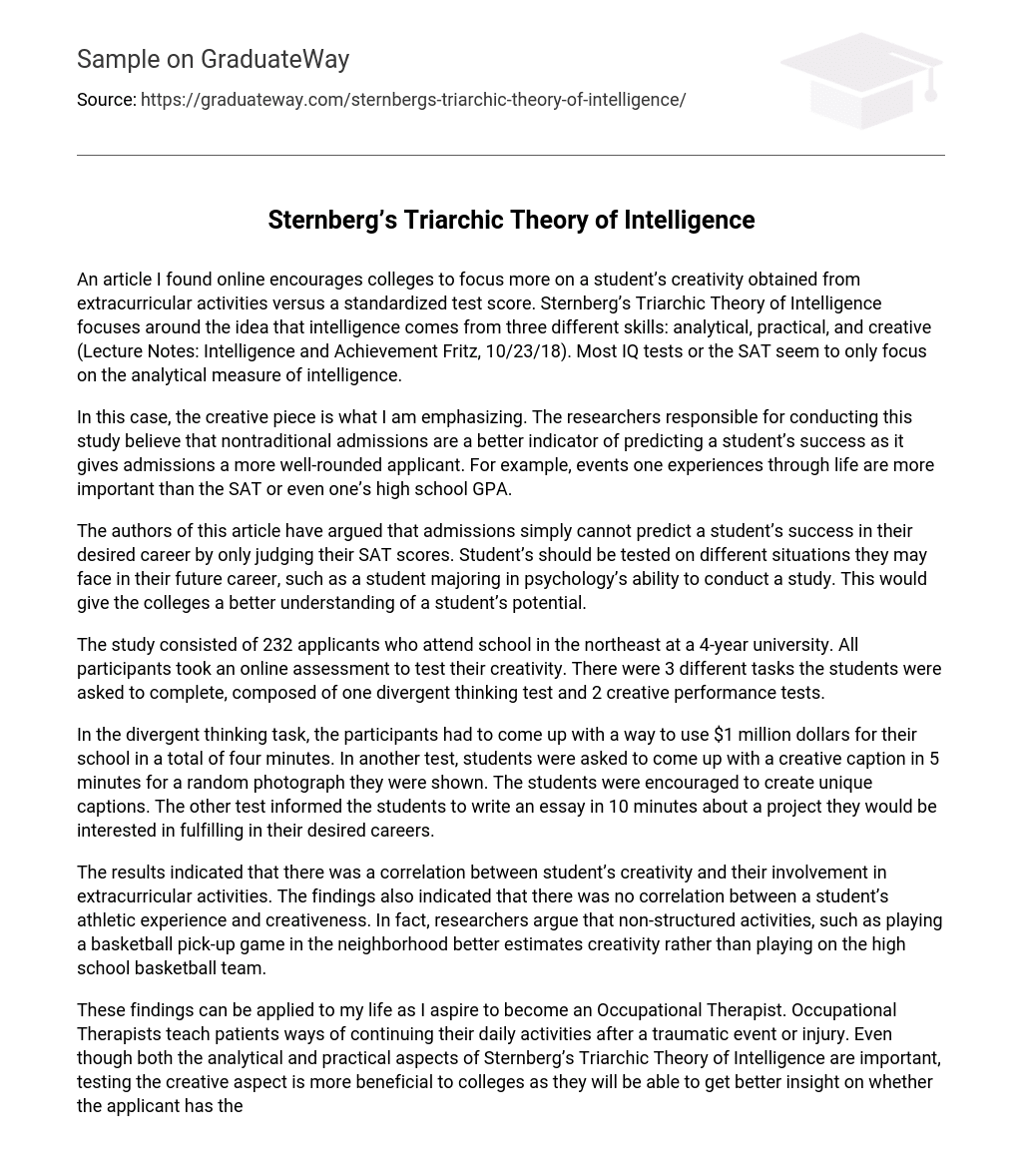An article I found online encourages colleges to focus more on a student’s creativity obtained from extracurricular activities versus a standardized test score. Sternberg’s Triarchic Theory of Intelligence focuses around the idea that intelligence comes from three different skills: analytical, practical, and creative. Most IQ tests or the SAT seem to only focus on the analytical measure of intelligence.
In this case, the creative piece is what I am emphasizing. The researchers responsible for conducting this study believe that nontraditional admissions are a better indicator of predicting a student’s success as it gives admissions a more well-rounded applicant. For example, events one experiences through life are more important than the SAT or even one’s high school GPA.
The authors of this article have argued that admissions simply cannot predict a student’s success in their desired career by only judging their SAT scores. Student’s should be tested on different situations they may face in their future career, such as a student majoring in psychology’s ability to conduct a study. This would give the colleges a better understanding of a student’s potential.
The study consisted of 232 applicants who attend school in the northeast at a 4-year university. All participants took an online assessment to test their creativity. There were 3 different tasks the students were asked to complete, composed of one divergent thinking test and 2 creative performance tests.
In the divergent thinking task, the participants had to come up with a way to use $1 million dollars for their school in a total of four minutes. In another test, students were asked to come up with a creative caption in 5 minutes for a random photograph they were shown. The students were encouraged to create unique captions. The other test informed the students to write an essay in 10 minutes about a project they would be interested in fulfilling in their desired careers.
The results indicated that there was a correlation between student’s creativity and their involvement in extracurricular activities. The findings also indicated that there was no correlation between a student’s athletic experience and creativeness. In fact, researchers argue that non-structured activities, such as playing a basketball pick-up game in the neighborhood better estimates creativity rather than playing on the high school basketball team.
These findings can be applied to my life as I aspire to become an Occupational Therapist. Occupational Therapists teach patients ways of continuing their daily activities after a traumatic event or injury. Even though both the analytical and practical aspects of Sternberg’s Triarchic Theory of Intelligence are important, testing the creative aspect is more beneficial to colleges as they will be able to get better insight on whether the applicant has the ability to succeed in their field.
In my career, it is more helpful to have creative intelligence as I may be faced with a problem of helping a patient do daily activities a new way. In little way can my ability to solve math problems help me with dilemmas I may face in the real world. I have had several past experiences throughout life that have made me respond in a way where creativity was required. Just like the researchers argue, colleges should pay more attention to a student’s potential in their specific field of study rather than just some number the SAT provides. Focusing on students’ personal experiences can also create a more diverse university.





